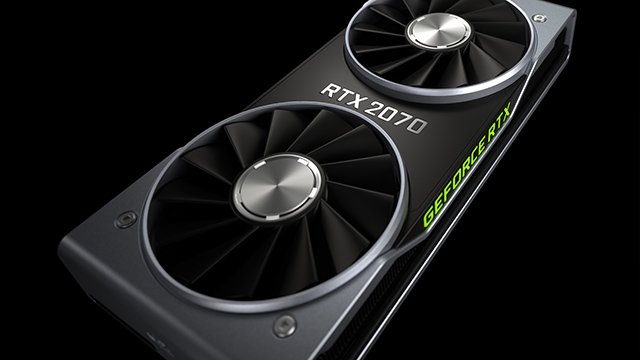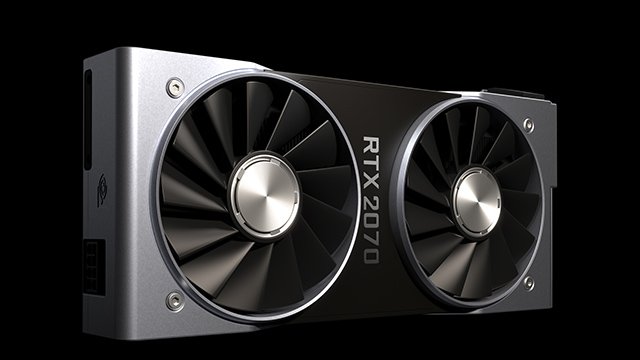The question of 2070 vs 1070 is a difficult one to answer right now. Nvidia revealed the more budget-friendly Turing chip at Gamescom 2018, but the prime focus was undeniably on the beefier RTX cards. With no release date to speak of compared to the September 20 date set for the two more expensive chips, the RTX 2070 is still mostly shrouded in mystery. But with a little research, we can take some educated guesses as to when the RTX 2070 will launch and how it might compare to the aging GTX 1070.
RTX 2070 vs 1070 – How much will the 2070 cost?
The price of the upcoming RTX 2070 GPU caused a little bit of confusion at the Nvidia showcase, as the prices revealed through the Nvidia webpage during the presentation were different to the prices revealed on-stage moments later.
Following the website going live and pre-order buttons coming into full view, the RTX 2070 looked set to retail for $599 USD. Once the official announcement was made, however, the price mentioned by Nvidia CEO and founder Jensen Huang was $100 less than before, meaning the RTX 2070 will retail for $499.
$599 is the price you’ll pay for a shiny Founders Edition GPU straight from Nvidia themselves, whereas $499 will be the MSRP of reference design RTX 2070 cards from Nvidia and third-party vendors like Asus and EVGA.
RTX 2070 vs 1070 – Performance and FPS

RTX 2070 vs GTX 1070 will be a fight for the ages, and how the RTX 2070 will perform against the GTX 1070 is a difficult question. Regardless, it’s one we should hopefully be able to answer with some light research into the past.
We have no solid numbers or specs to work on here, but Nvidia’s GPU naming conventions usually see the XX70 card of one generation push frames similar to that of the xx60 of the next generation. A generational leap in GPUs usually means new backend features (like Ray Tracing in this case) and more efficient energy consumption, but these things rarely equate to massive performance jumps.
To give a quick example, a current-day GTX 1060 is usually expected to achieve frame rates similar to the last generation GTX 970. A mid/top-end card falls to the mid-range, making room for new top-end cards like the XX80, Ti, and Titan chips. A few charts on TechPowerUp pertaining to a third-party AMD chip includes some relevant GTX comparisons.
Of course, the RTX 2070 will bring all of its Ray Tracing tech to make games look super shiny compared to last-gen GPUs, but that isn’t going to make a bit of difference to games that don’t utilize it. Either way, ray tracing isn’t going to help bump up your average FPS, but the RTX 2070 should still be noticeably better than the current GTX 1070.
We’ll have to wait for reference cards to make it into the hands of reviewers before we can really see how the two stack up, but for now, expect similar gains to before; jumping from a 1070 to the RTX 2070 should bring around 30-45% higher frame rates in common scenarios. High-resolution games should benefit from the GDDR6 memory, too.
2070 vs 1070: Is the RTX 2070 Worth It?
Bottom line, then. Is the RTX 2070 going to be worth it? Money-wise, we’re inclined to say yes; but it really depends on your use-case. The RTX family of GPUs look to come at a price premium thanks to the new Ray Tracing tech baked in. This will make supported games look better, but not necessarily play smoother.
Expect modest gains in frame rates as with any generational GPU release, but remember that the launch price of these cards is still above the price the last-gen models these replace launched at a few years back.
You’re paying for visual fidelity more than increased performance, so those merely looking for some kind of competitive advantage here might not see a real reason to upgrade.







